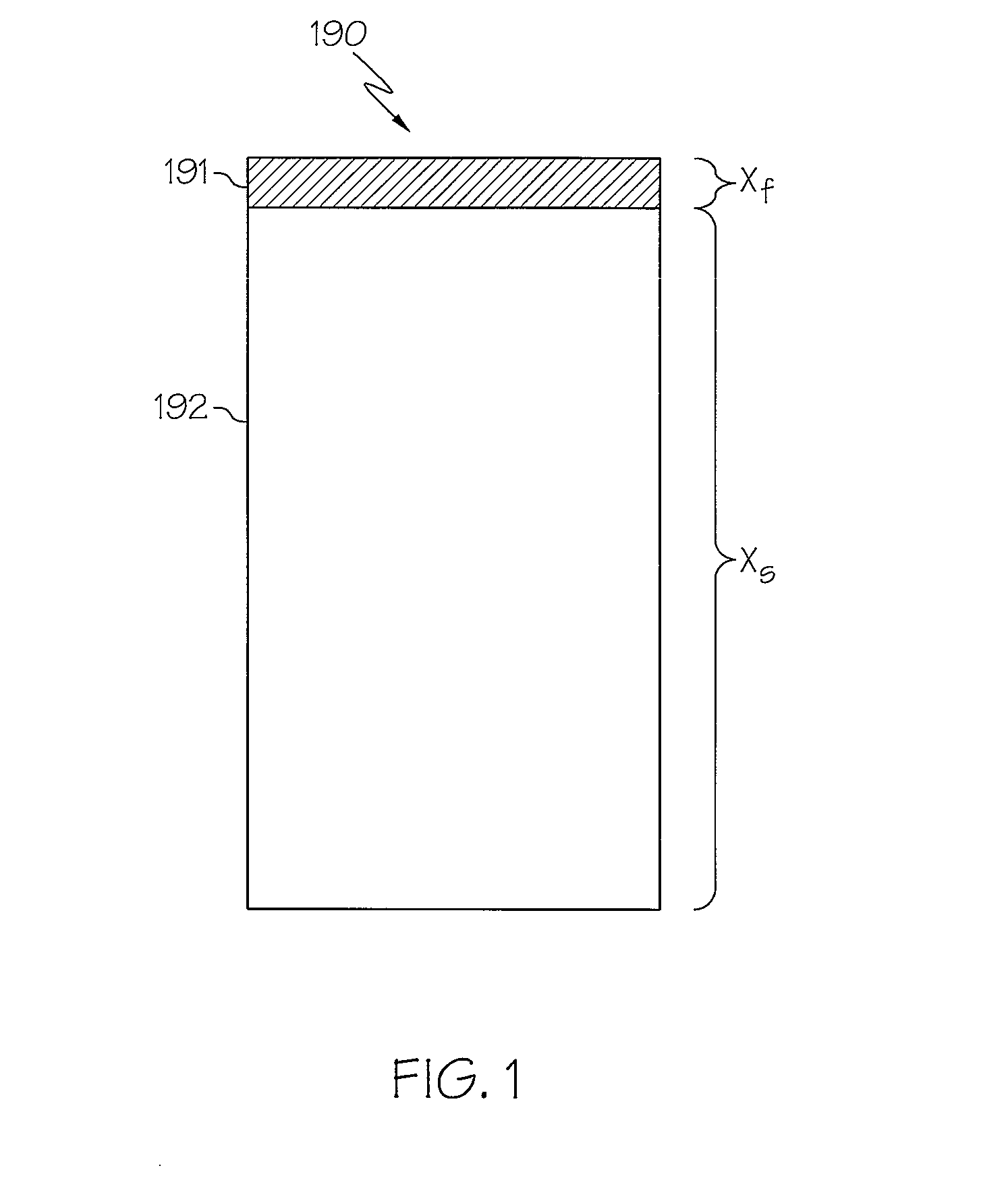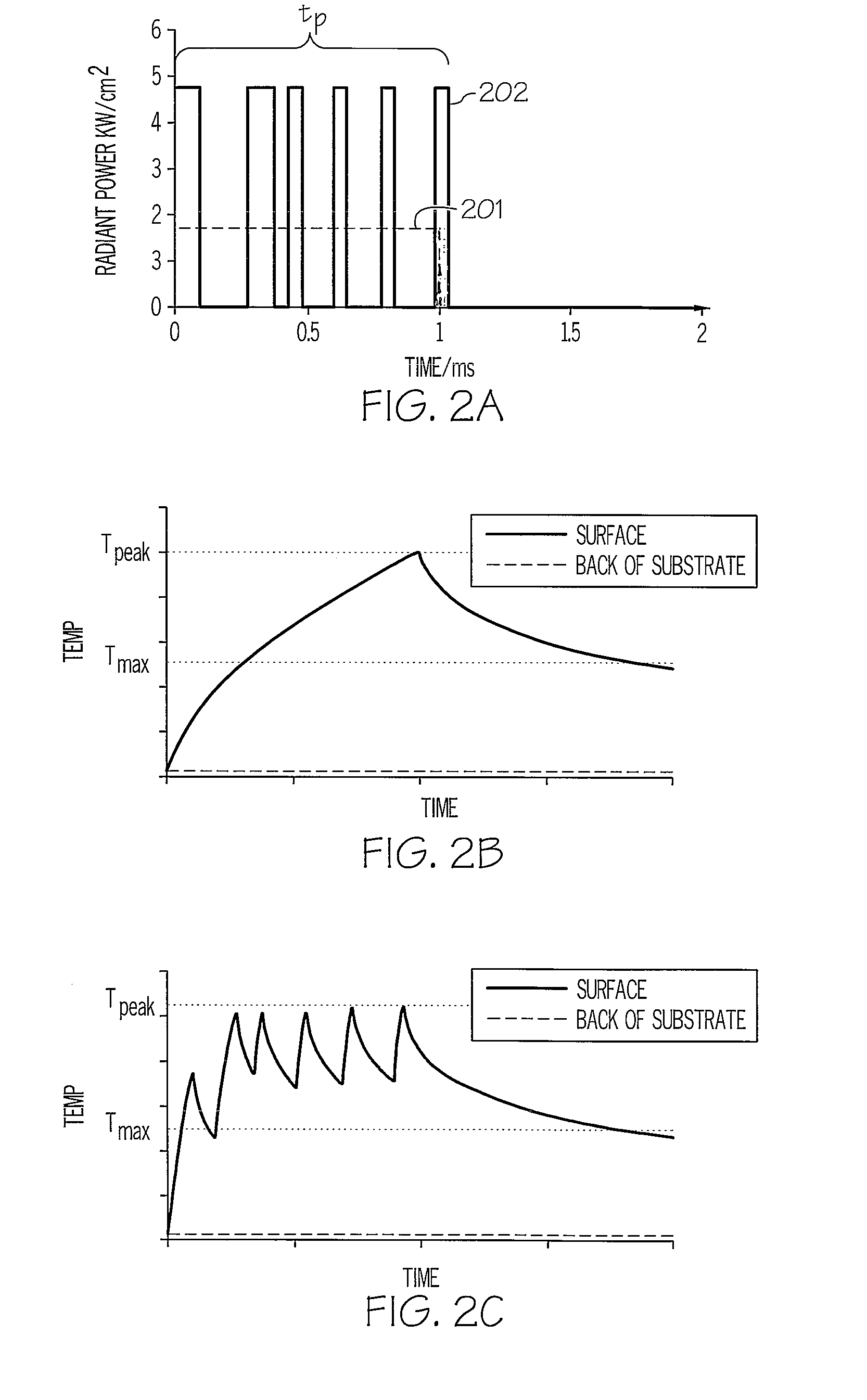Method for Drying Thin Films in an Energy Efficient Manner
a technology of energy-efficient drying and thin films, applied in the direction of drying solid materials, drying, drying, etc., can solve the problems of reducing the maximum working temperature of expensive substrates, reducing the drying temperature, and utilizing relatively low temperatures to dry thin films
- Summary
- Abstract
- Description
- Claims
- Application Information
AI Technical Summary
Benefits of technology
Problems solved by technology
Method used
Image
Examples
example 1
Drying and Sintering of Nano-Silver Ink on PET
[0055]Two samples of nano-silver ink on PET were prepared, each sample being a 1 micron thick of nano-silver thin film printed on a 150 micron thick PET substrate. A first sample was dried in an oven at 150° C. for 5 minutes to drive off solvent and exposed to a single light pulse of 1 ms in duration at 1.6 kW / cm2 at a webspeed of 10 m / min with an overlap factor of 4 depositing 1.6 J / cm2 of energy with each delivery of single light pulse for a total of 6.4 J / cm2 energy deposited onto the substrate to sinter the silver.
[0056]Without being dried in the oven, the second sample was exposed to a 1 ms long composite light pulse comprised of 6 different micropulses of differing pulse lengths and delays, and the timing (in μs) of the composite light pulse is shown in Table III.
TABLE IIITurn onTurn off01002893744394746046447898299991,037
[0057]The intensity of the light pulses was increased to 4.7 kW / cm2 so that the total amount of energy deposite...
example 2
Multi-Temperature Zone Processing Accounting for Solvent Evaporation
[0062]The tunability of the pulse profile is particularly useful for drying thin films where multiple distinct processes can be performed in a single pass. In short, a thin film that contains solvent cannot be heated as rapidly as one which is already dried. That is, when solvent is in the thin film, a high power will rapidly expand the solvent and “explode” the thin film, resulting in a cohesive failure. Ideally, one desires to first remove the solvent at a lower power until it is removed followed by a higher power exposure to perform additional thermal processing such as sintering. FIG. 2d shows a representative thermal response profile of the film and substrate of example 1 from a composite pulse in which the first portion of the pulse maintains the temperature at the surface of the thin film at about 700° C. for the first 1.2 ms, followed by a higher power exposure in order to maintain the thin film's temperatur...
example 3
Prevention of Cohesive Failure in a Thin Film by Modulation of Gas Generation
[0064]An aqueous copper precursor ink was formulated comprising 10.0% wt. copper (II) oxide, 4.5% wt. copper (II) acetate in a base containing ethylene glycol and glycerol. Traces were printed onto a 125 micron thick PET sheet using an Epson Stylus C88 ink jet printer. Upon curing with a flashlamp, the copper oxide and copper acetate are reduced by the ethylene glycol and glycerol to form a film of conductive copper metal. The reduction reaction generates a moderate amount of gas.
[0065]The printed film was cured using the method and apparatus of the present invention with the following conditions: voltage 250 V, composite light pulse duration=˜1,050 microseconds, 4 micropulses with a duty cycle of 0.6 (i.e., each micropulse was 175 microsecond long with a delay of 117 μs between pulses), overlap factor=3, web speed=6.4 m / min. The sample yield was 100% with an average sheet resistance of 3.7 Ω / □.
[0066]When t...
PUM
| Property | Measurement | Unit |
|---|---|---|
| temperature | aaaaa | aaaaa |
| total time | aaaaa | aaaaa |
| thermal equilibration time | aaaaa | aaaaa |
Abstract
Description
Claims
Application Information
 Login to View More
Login to View More - R&D
- Intellectual Property
- Life Sciences
- Materials
- Tech Scout
- Unparalleled Data Quality
- Higher Quality Content
- 60% Fewer Hallucinations
Browse by: Latest US Patents, China's latest patents, Technical Efficacy Thesaurus, Application Domain, Technology Topic, Popular Technical Reports.
© 2025 PatSnap. All rights reserved.Legal|Privacy policy|Modern Slavery Act Transparency Statement|Sitemap|About US| Contact US: help@patsnap.com



